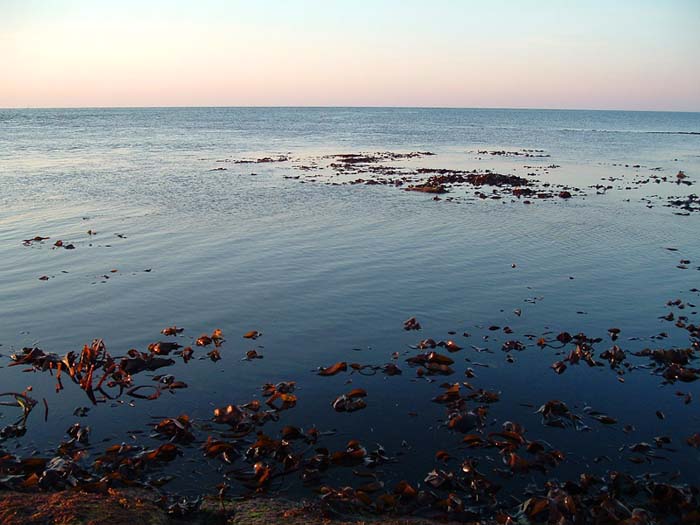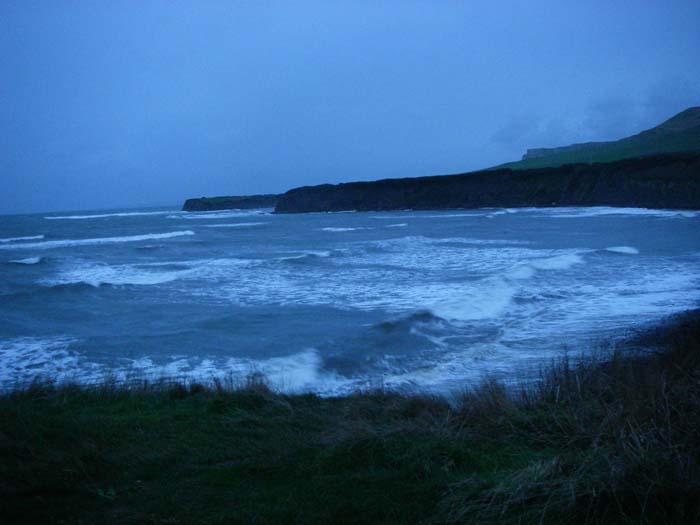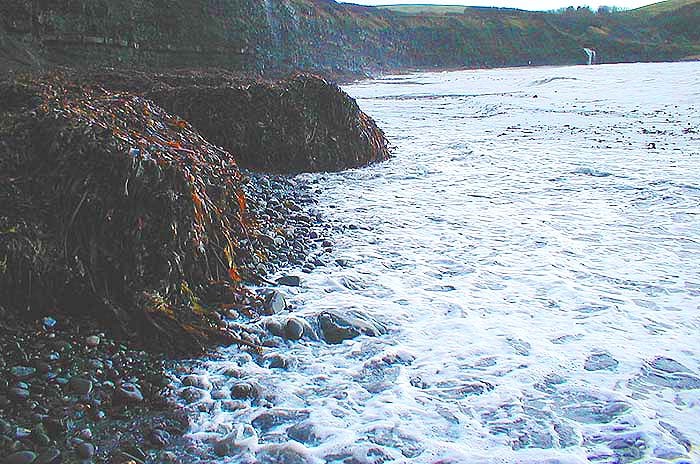 '
'Information Page.
Windy weather.
I wrote this a while back but most of it still applies - Are you ever troubled by wind? Perhaps the most important bit of understanding which a sea angler can acquire is where to fish, with the best chances of success, for any particular state of tide and wind.
The usual advice proffered to beach fishermen is to make the most of a coloured, ‘falling-sea’ following a strong onshore blow. With out a doubt this is good advice because periods of strong wind produce big waves to pound the shallow water. The disturbance dislodges burrowing and clinging animals as is evident from the numbers of dead and dying creatures cast up along the strand line. Sea fish, despite their diverse ways of life, are opportunists and rarely miss the chance of an easy meal produced by natural ground baiting.
In the warmer weather, light off shore winds often concentrate whitebait and other small-fry close to the shoreline. This gives float anglers and spinning addicts the chance to capitalise on late evening/early morning frenzies of bass, pollack or mackerel. In addition, following the well known 'sea breeze' that often blows through the hours of daylight, the wind usually blows 'off the land' at night as it cools down more quickly than the sea. During the transition periods at dawn and dusk there may be no wind at all.
Along the South Coast onshore winds and rough seas deposit kelp and wrack along the high tide mark. These piles are quickly colonised by seaweed flies forming maggot-laden ‘compost’ heaps which draw mullet and bass like a magnet on the top of the spring tides. In the absence of wind, the calm conditions often fail to wash maggots into the sea but a light, wind-driven surf or chop will have the fish feeding in their thousands along the margins.
Even the boat angler is not immune to the efforts of the wind for, quite apart from the many trips which are ‘blown off’ by rough weather, the wind will often affect positioning of the boat at anchor, enough to make the difference between fish and no fish. Quite often that sudden, brief period where the bream or pollack ‘come on the feed’ simply reflects the short spell when the boat, swinging across the tide in a cross wind, passed over the small ‘mark’ where the fish were concentrated. I often noticed such 'spells of action' when I used to fish from a small anchored dinghy and it was usually worth repositioning the anchor to take advantage of the 'mark'.
It certainly pays to consider the wind for most types of fishing. Of course the old sayings such as 'When the wind is in the east, then the fishes bite the least' are misleading because a lot will depend on the time of year (east winds off the continent are often very cold in winter). In fact the aspect of the shore that you are intending to fish makes a huge difference to your prospects as well because you can usually find a bit of shelter or just the right amount of surf by choosing a beach facing in a different direction. Our recent bass trip (Saltwater page 29-10-07) shows exactly what I mean.
If you have any comments or questions about fish, methods, tactics or 'what have you.'get in touch with me by sending an E-MAIL to - docladle@hotmail.com
No wind.
 '
'Onshore wind.
 '
'Storm.
 '
'Weed pile.
 '
'Thanks to the wind.
 '
'